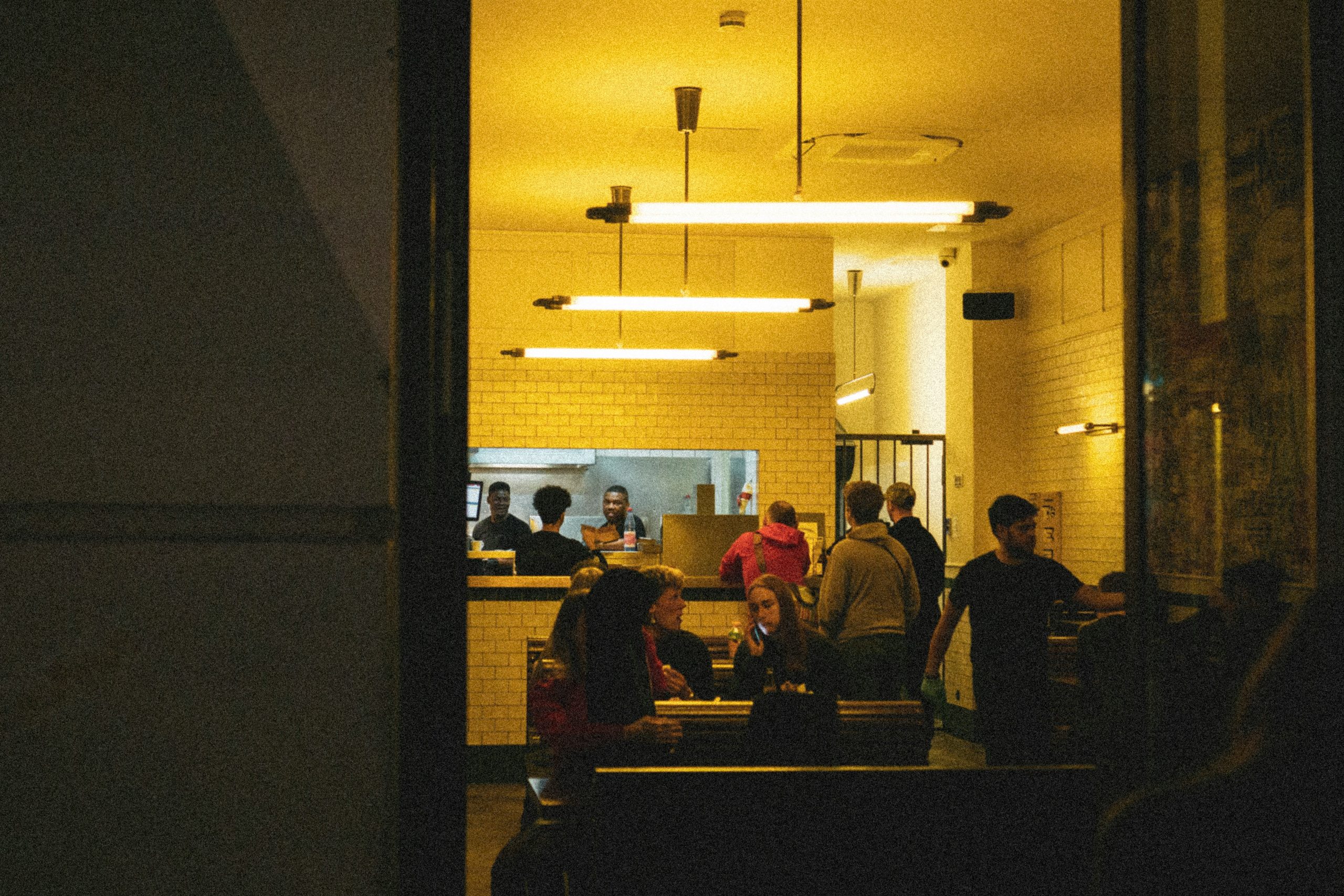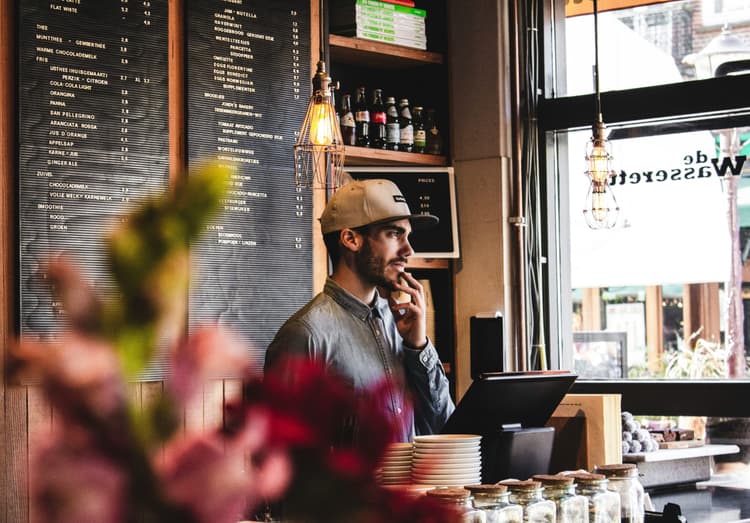Key Data Points:
- The global fast casual restaurants market is projected to grow from $191.02 billion in 2025 to $318.52 billion by 2033 at a CAGR of 6.6%
- Fast casual sales increased 3.2% year-over-year during the first half of 2024, while quick-service restaurant sales stayed flat
- Customer spending increases 20% when ordering via technology
- Online ordering grew check averages for quick service restaurants by 26% and fast casuals by 13%
- Mobile represents 60% of all digital restaurant orders today
- 70% of consumers say they’d rather order directly from a restaurant, preferring that their money goes straight to the restaurant and not a third party
Fast casual restaurants occupy a sweet spot in the dining landscape—offering higher quality than traditional quick-service without the wait times and price points of full-service establishments. But maintaining this delicate balance at scale requires sophisticated operational capabilities that would have been impossible just a few years ago.
Technology has become the great enabler of the fast casual format, allowing smaller operations to deliver experiences that feel premium while maintaining the speed and efficiency that modern consumers demand. The result? Fast casual is rapidly taking market share from both traditional QSR and casual dining, powered by digital ordering platforms that transform how restaurants operate.
The Fast Casual Value Proposition
The appeal of fast casual dining is straightforward: customers want quality food, reasonable prices, and the ability to get in and out quickly without sacrificing atmosphere or customization. It’s a demanding combination that challenges traditional operational models.
Full-service restaurants offer quality and ambiance but require table service, longer wait times, and higher prices to cover increased labor costs. Traditional QSRs deliver speed and value but often compromise on ingredient quality, customization, and dining environment. Fast casual promises the best of both worlds—and technology makes it possible to deliver on that promise consistently.
Recent moves by fast casual leaders signal their ambition to capture even more market share. Cava’s renewed focus on warmer, more comfortable restaurant interiors through its “Project Soul” initiative shows that the fast casual chain is determined to take share from casual dining, not just compete with other quick-service concepts. They’re betting that with the right combination of quality, speed, technology, and atmosphere, they can give customers everything they want without the traditional trade-offs.
Multi-Channel Ordering as Core Strategy
Frank Paci, CEO of Newk’s Eatery, articulates the modern fast casual approach perfectly: “We continue to try to meet the guests where they want to (and) how they want to access the brand. So as a result obviously we’ve continued to invest in third party delivery. We’ve got online ordering. We’ve got kiosks in store. You can order table side in our stores.”
This isn’t about having multiple ordering options for the sake of novelty—it’s about operational flexibility and customer choice becoming fundamental to the business model. Different customers have different preferences, and even the same customer might prefer different ordering methods depending on the situation.
In-Store Kiosks
Self-service kiosks excel during lunch rushes when speed matters most. Customers can walk in, place their order immediately without waiting in line, customize their meal precisely, and pay in under two minutes. The kiosk handles the transaction while kitchen staff focus entirely on food preparation, creating clear separation between order-taking and order-making that improves both speed and quality.
For fast casual concepts with extensive customization options like Original ChopShop—build-your-own bowls, sandwiches with dozens of ingredient choices, complex salad combinations—kiosks provide the perfect interface. Customers can explore options visually, take their time making selections, and see exactly what they’re ordering without the rushed feeling of holding up a line.
Mobile and Online Ordering
The ability to order ahead transforms the fast casual experience. Customers can browse menus during a brief work break, place orders from their office, and arrive at the restaurant to pick up food that’s ready and waiting. This convenience factor has become table stakes in fast casual, and the brands executing it well see dramatic increases in order frequency.
Mobile ordering also generates invaluable data about customer preferences, peak ordering times, and popular menu combinations. This intelligence allows operators to optimize staffing, ingredient prep, and menu offerings based on actual behavior rather than assumptions.
Third-Party Delivery Integration
While delivery adds complexity and commission costs, it also expands the addressable market beyond whoever happens to be within walking or driving distance during meal times. For fast casual brands, delivery isn’t just about convenience—it’s about creating occasions to eat their food that wouldn’t otherwise exist.
The challenge is integrating delivery orders seamlessly into kitchen operations without disrupting the experience for dine-in and pickup customers. Sophisticated restaurant format trends show that winners manage multiple order channels as a unified operation rather than treating each channel as a separate business.
Tableside Ordering
Some fast casual concepts are experimenting with tableside ordering via QR codes or tablets, allowing customers to sit down first and then browse the menu and order at their leisure. This approach combines the relaxed atmosphere of full-service dining with the efficiency of self-service technology, creating yet another way to customize the experience for different customer preferences.
Technology as a Quality Differentiator
Here’s where fast casual technology creates genuine competitive advantage: when implemented thoughtfully, digital ordering doesn’t just make operations more efficient—it makes the food better.
Consider the typical lunch rush at a restaurant with only counter ordering. Staff scramble to take orders while also coordinating with the kitchen, managing the register, and handling customer questions. The kitchen receives a flood of tickets all at once, making it difficult to maintain consistent quality when everything needs to be prepared simultaneously.

Now contrast that with a digitally-enabled operation. Orders flow in through multiple channels but arrive at the kitchen in a steady, manageable stream. The kitchen display system organizes tickets logically, showing prep times and flagging items that need immediate attention. Staff aren’t pulled away from food prep to handle order-taking duties. The result is more consistent quality, better accuracy, and the ability to handle higher volume without quality degradation.
This operational excellence becomes a brand differentiator. Customers notice when their customized order is prepared exactly right, when their pickup order is ready precisely when promised, and when the lunch rush doesn’t compromise food quality. These aren’t minor details—they’re the core experiences that drive repeat visits and positive word-of-mouth.
The Integration Challenge
The fast casual brands winning with digital ordering platforms solve this through unified systems that integrate seamlessly across all channels. The key is ensuring each component of your technology stack works together rather than creating silos.
Platforms like Bite exemplify this integration-first approach. While Bite’s kiosk software specializes in the in-store ordering experience, it’s designed to integrate seamlessly with existing restaurant technology infrastructure—connecting with POS systems and loyalty platforms to ensure data flows smoothly across your operation. This integration capability is crucial because it allows restaurants to add best-in-class kiosk functionality without disrupting their existing technology stack or forcing them to replace systems that already work well.
The power of proper integration extends beyond just connecting systems. When kiosk software like Bite integrates with your POS and loyalty platforms, it creates a complete view of customer preferences and ordering behavior. This data becomes invaluable for making informed decisions about menu optimization, pricing strategies, promotional timing, and operational improvements. Restaurants can see which items perform best at kiosks versus counter ordering, identify upsell opportunities that resonate with customers, and understand how loyalty members interact with self-service technology differently than casual guests.

This matters enormously for fast casual operators managing multiple ordering channels. When your kiosk platform integrates properly with core systems, staff see:
- Consistent order information regardless of how customers place their orders.
- Inventory tracking remains accurate. Customer loyalty data stays synchronized.
- Menu updates made in your POS automatically reflect at kiosks.
- The operation runs smoothly because your technology supports your workflow rather than fighting against it.
For restaurants using separate systems for mobile ordering and third-party delivery alongside in-store kiosks, the integration capability becomes even more critical. By ensuring your kiosk software works harmoniously with your existing POS and loyalty infrastructure, you create a foundation that supports whatever additional ordering channels you choose to offer. This flexibility allows you to meet customers wherever they want to order—whether that’s at a kiosk, through your mobile app, via delivery platforms, or at the traditional counter—while maintaining operational coherence behind the scenes.
The Smaller Format Advantage
Interestingly, fast casual’s typically smaller physical footprint becomes an advantage in the digital ordering era. These restaurants don’t need extensive dining rooms when significant order volume comes through pickup, delivery, and takeout channels. This allows for premium locations in high-traffic areas where rent would be prohibitive for larger formats.
The economics work beautifully: digital ordering drives higher throughput through smaller spaces, reducing rent costs per transaction while maintaining or improving the customer experience. Technology allows fast casual concepts to generate full-service level revenue from quick-service sized locations.
Beyond Efficiency to Hospitality
The most sophisticated fast casual operators understand that technology’s ultimate purpose isn’t just efficiency—it’s enabling genuine hospitality at scale. When routine transactions happen digitally, staff have bandwidth to make eye contact, offer recommendations, check on dining customers, and create moments of connection that turn first-time visitors into regulars.
This is the paradox that fast casual has cracked: more technology enables more humanity. The kiosk handles the transaction so the employee can focus on hospitality. The mobile app manages the order so the kitchen can focus on quality. The integrated systems handle coordination so everyone can focus on their craft.
While other restaurants install in-store ordering kiosks, chains like Cava are prioritizing face-to-face interaction, recognizing that technology should enhance rather than replace the human element in dining.
The Future Is Already Here
Fast casual’s success with digital ordering isn’t speculative—it’s happening now. The brands posting double-digit growth aren’t doing so despite investing in technology, but because of it. They’ve recognized that the format’s inherent advantages only fully emerge when supported by digital ordering platforms that make operational complexity invisible to customers.
For restaurants still approaching technology as an afterthought or treating each digital channel as a separate initiative, the lesson is clear: true omnichannel capability, where every ordering method integrates seamlessly into unified operations, has become the competitive baseline in fast casual. The question isn’t whether to build this capability, but how quickly you can get there before competitors capture the market share you’re leaving on the table.






